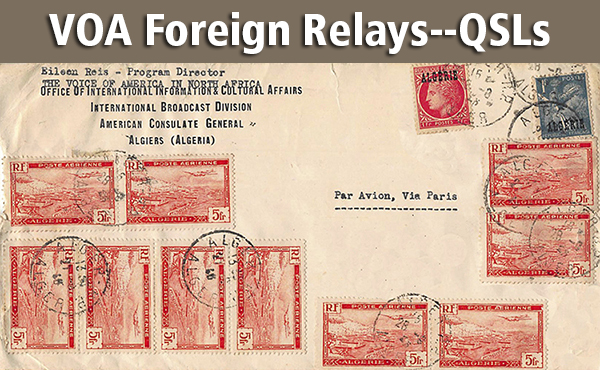 The VOA was seldom a high-value DX target for hardcore DXers, and VOA QSLs were generally pretty ordinary. But psychic value was added to a VOA QSL when it had some special novelty, be it appearance, how obtained, or the circumstances of its issuance. In the early days, from 1942 to the early 1960s, most VOA QSLs were of four basic designs. In the 1940s, when VOA was in its infancy, some sites QSLed direct rather than through Washington. But this soon ended, and through the 80s it was nearly impossible to QSL VOA except through Washington. The VOA was seldom a high-value DX target for hardcore DXers, and VOA QSLs were generally pretty ordinary. But psychic value was added to a VOA QSL when it had some special novelty, be it appearance, how obtained, or the circumstances of its issuance. In the early days, from 1942 to the early 1960s, most VOA QSLs were of four basic designs. In the 1940s, when VOA was in its infancy, some sites QSLed direct rather than through Washington. But this soon ended, and through the 80s it was nearly impossible to QSL VOA except through Washington.
Things started changing in the 1990s. The "Washington-only" policy was relaxed a bit, and some sites would QSL direct, either as a general matter or idiosyncratically, depending on the inclinations of the local personnel. The VOA would also issue some "special occasion" QSLs, such as for test transmissions or the inauguration of a new transmitter site. It also issued a series of QSLs showing the various VOA local transmitter sites. In addition, some VOA personnel, both at headquarters and in the field, were willing to sign and return prepared cards.
I started trying my luck at obtaining some of these "out of the ordinary" VOA QSLs from VOA foreign relay bases. I dug around for the addresses of the relay stations, and sometimes I could locate the names of specific personnel. Usually I sent a recording with my report, and I always enclosed return postage in mint stamps or a dollar bill in hopes that a QSL might be returned by the regular mail rather than through Washington. I was surprised at how often the VOA bureaucracy turned into a friendly channel of listener-station communication, especially since I was not in the VOA target audience. I collected some nice cards and letters, and I have posted them below, together with some historical VOA QSLs from others, and a few other interesting items about the stations.
If you have any unusual VOA QSLs, we would be happy to add them. (Jerry Berg) |
| ALGERIA |
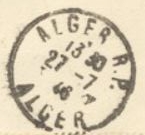 |
- The Algiers station commenced operation in November 1942, soon after American troops landed in Operation Torch. It was the same year that VOA, as a distinct administrative entity, was born. Algiers became a major Allied communications base, and VOA broadcasts from there were less a part of a broad plan for American international broadcasting than a providential offshoot of American military activities. As this 1945 letter to Roger Legge explains, the transmitters were 50 kw., and they operated on 25, 31 and 49 meters, plus mediumwave. The station was operated by the Office of War Information, and was active until 1947 (it is unmentioned in the 1947 WRTH but it is listed in the Foreign Broadcast Intelligence Service publication, "Broadcasting Stations of the World," August 1, 1945, 9610, 11765, 15165 kHz.).
- This 1946 letter was to a listener in Norway.
- Eventually the VOA North Africa station developed its own QSL card.
|
| BELGIAN CONGO |
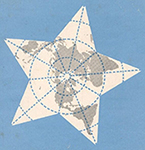 |
- You don't usually associate VOA with the Belgian Congo. However, Radio Congo Belge, headquarterd in what was then Leopoldville, carried VOA news at times. According to the 1952 WRTH, 9210 kHz (OTH) operated with 7.5 kw. I have not seen a "VOA-Leopoldville" card before, and this one may have been a one-off--I believe its owner, Roger Legge, worked for VOA at the time.
|
| BOTSWANA |
 |
|
| CANAL ZONE (USCGC Courier) |
 |
- The Courier was the VOA floating radio station. It came on the air on April 18, 1952 during a shakedown cruise to the Panama Canal. Eventually it moved to Rhodes. In addition to the regular VOA "star" QSL, reception reports often brought a Courier postcard. There is much more about the ship and its radio activities on our Courier page.
|
| CEYLON / SRI LANKA |
 |
- VOA broadcasting from Ekala, Ceylon started in 1953. This 1954 QSL for the Ceylon station is the usual "star" card, but it is unusual because it is signed by the Resident Engineer in Colombo, and it has the Colombo schedule typed on the back. Did the Resident Engineer have some VOA cards on hand for reports sent directly to Colombo? Or did someone get a blank VOA card and enclose it in a report sent to Colombo? Or did the Resident Engineer fill out this card while he was in Washington?
- This letter, bearing the station's local address, was signed by Relay Station Manager David M. Sites and posted from Ceylon (by then called Sri Lanka) in the regular mail. The signer later moved to the Morocco station (see below).
- After a long, star-crossed construction process that included demonstrations, physical attacks, and a fire, the VOA's new site at Iranawila finally opened in 1999. Reports sent to the station (by now parented by the International Broadcasting Bureau) were answered with this card.
- The Iranawila transmitters were of Marconi manufacture, and test transmission reports sent to Marconi's Sri Lanka office brought this QSL letter.
|
| GERMANY |
 |
|
| GREECE |
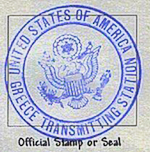 |
- This direct, 1955 QSL is from the relay station in Salonika. It is another QSL on the letterhead of "The Foreign Service of the United States," with "United States Information Agency" typed in above it. The USIA had been formed in 1953. The letter is signed by the Chief Engineer at the Salonika station. New
- The Transmitter Plant Supervisor in Greece enclosed his business card with this prepared card for a 2002 report on the Kavala station. The VOA transmitted from Thessaloniki (Salonika) (35 kw.) from 1953 to 1972, and from Kavala (250 kw.) during the years 1972 to 2006, when it closed down.
|
| HAWAII |
 |
- Not a "foreign" relay, of course, but still distant from the U.S. mainland, KRHO was a 100 kw. VOA relay base on the Hawaiian island of Oahu. It came into operation in December 1944, and was on the air until 1969. It was one of the first relay bases built specifically for the VOA. There is an excellent three-part story about KRHO on the Radio Heritage Foundation website (Part 1, Part 2, can't locate Part 3).
|
| KUWAIT |
 |
|
| LIBERIA |
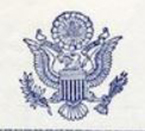 |
- This 1964 letter from Monrovia verifies the listener's report on point-to-point transmissions, which Liberia and Washington used to exchange program material.
- Monrovia amateur radio operator EL2AF must have worked at the VOA station. Here is a photo of the station when it was under construction. It went on the air in 1962, and closed in 1990, a victim of the Liberian civil war.
|
| MOROCCO |
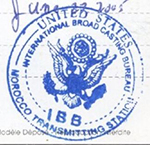 |
- The VOA station in Morocco was located in Tangier from 1949 to 1993, when it moved to Briech, Morocco, its location until it closed in 2008. The same David M. Sites who had signed my QSL from Ceylon in 1993 was now in Morocco, and replied with a letter for a December 31, 1996 report. You can find a VOA Tangier ID from 1959 here.
- In 2005 the Morocco station responded to another report. Apparently I had sent them a report in 2002, and, after receipt of a follow-up from me in 2005, they were unable to find my original recording, so I sent them a duplicate, after which they sent a detailed letter verie, together with two ham-style QSL-cards depicting Tangier. Deputy Station Manager Gary R. Shirk was the signer (he had been in Saipan before this; see below).
- In 2006, VOA HQ was verifying reports with a QSL-card showing the Morocco transmitting plant.
|
| PHILIPPINES |
 |
- In 1948, the Chief Engineer in Manila responded direct to a listener in Sweden, and noted that they received many listener reports. The station, in Malolos, opened in 1948 and operated until 1968, when a new Tinang station opened.
- This 1955 letter verifies reception of the Philippines station, and is another QSL on Foreign Service letterhead. The partially-obliterated agency name under the seal is surely U.S. Information Service, the name given to the overseas posts of the U.S. Information Agency, which was less than two years old at the time. The letter is signed by the manager of the station, and it gives a return address of International Broadcasting Service, APO 74, San Francisco. "International Broadcasting Service" was the name given to the VOA within the USIA. It is not known whether this letter was for reception of the Malolos (Manila) station or the then-new Poro Point (San Fernando) station, which opened in 1954. New
- The Tinang station responded by letter from the "International Broadcasting Bureau, Philippines Transmitting Station," via the U.S. Embassy in Manila. This was in 2004 (for another 2002 follow-up).
|
| SAIPAN |
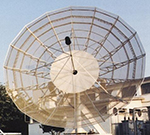 |
- This 2001 QSL shows satellite dishes which, according to the back of the card, are "used to receive VOA programming transmitted from Saipan . . . ." But the picture is actually of Kavala (see letter in the next entry). The Saipan station came on the air in 1998. (This QSL verifies a report on a mediumwave transmission from Kuwait.)
- In 2003, Saipan verified direct with a letter from Gary R. Shirk, who would later QSL a report sent to Morocco (see above). He also returned a prepared card. This was for a Radio Free Asia transmission.
|
| SAO TOME |
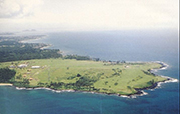 |
|
| SPAIN |
 |
- In 1992, amateur station ED3VOA commemorated the 50th Anniversary of the Voice of America. The picture is of the IBB Playa de Pals station, which was used for Radio Liberty transmissions. It was in operation from 1959 to 2001, and demolished in 2006.
|
| THAILAND |
 |
|
| TINIAN |
 |
- "This is a test transmission from an International Broadcasting Bureau station located on the island of Tinian in the western Pacific." Dan Ferguson signed this letter from IBB HQ when the Tinian station first came on the air in January 1999. Tinian was the takeoff point for American bombing runs on Japan, including delivery of the atomic bombs.
- Gary Shirk carried the day again in 2003 with a nice letter verifying Tinian, and also enclosed a ham card from K3VOA, the VOA Amateur Radio Club station. I must have sent him a blank "VOA Saipan" card and asked him to fill it out, because in his letter he indicated that the photo on the card was not in fact from the Saipan station. He thought it might have been from Liberia, but apparently it was Kavala (see second Saipan entry above).
|
| PROGRAM QSLs |
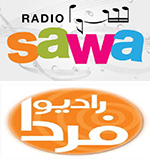 |
In the early 2000s, the U.S. government embarked on the creation of a number of special services to either supplement or supplant regular foreign-lamnguage programming. A number of these "rebrandings" were verified via prepared cards from John Vodenik. All are still on the air in one form or another.
- Radio Sawa is a fast-moving Arabic service that replaced the standard VOA Arabic programming in 2002. It featured popular music and periodic news bulletins.
- Radio Farda was a joint project of VOA and RFE-RL. The Persian-language service, beamed to Iran, replaced the regular RFE-RL Persian service.
- In 2003, VOA inaugurated a new youth-oriented service in Urdu called Radio Aap Ki Dunyaa. It was intended for listeners in Pakistan.
- Studio 7 was also set up in 2003. It was a special service for Zimbabwe, established out of concern for increasing repression in that country.
|
| VOA AMATEUR RADIO PROGRAM |
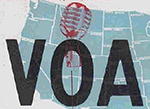 |
|















